Arapaho Blackberry Tree
- June 12, 2023
- 0 comment

Common Name: Arapaho Blackberry Tree
Botanical Name: Rubus fruticosus ‘Arapaho’
Family: Rosaceae
Plant Type: Deciduous shrub
The Arapaho Blackberry Tree (Rubus fruticosus ‘Arapaho’) is a thornless, deciduous shrub that produces an abundance of delicious, sweet-tart blackberries. With its upright growth habit and moderate size of 3 to 4 feet in height and width, it is a popular choice for gardens and landscapes. This self-fertile variety is known for its disease resistance, making it relatively easy to care for. The Arapaho Blackberry Tree thrives in full sun and well-drained soil, but it can adapt to various soil types. It is hardy in USDA zones 5 to 9 and has a lifespan of approximately 15 to 20 years. Apart from its culinary benefits, this blackberry tree attracts wildlife and adds aesthetic appeal to any outdoor space.
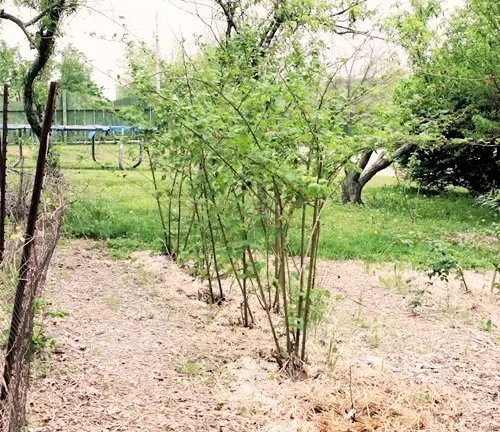
Mature Size and Growth Rate
The Arapaho Blackberry Tree typically reaches a height of 3 to 4 feet (0.9 to 1.2 meters) and spreads about 3 to 4 feet wide. It has a moderate growth rate.
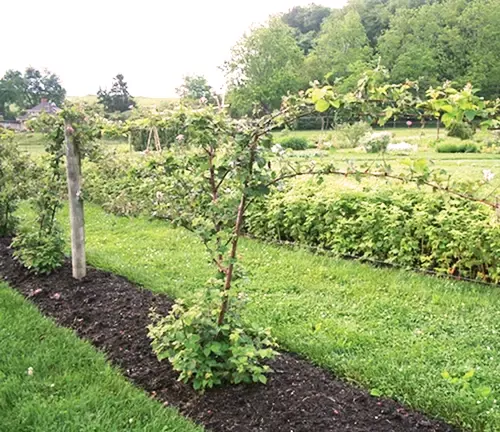
Soil Preference
It prefers fertile soil with a slightly acidic to neutral pH level.
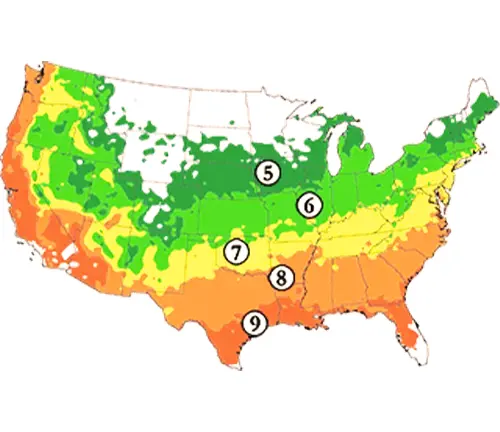
Hardiness Zones
This blackberry tree is hardy in USDA zones 5 to 9, making it suitable for a wide range of climates.
Sun Preference
The Arapaho Blackberry Tree thrives in full sun, although it can tolerate partial shade.
Attributes
The Arapaho Blackberry Tree is cherished for its abundant harvest of delicious blackberries. It produces large, firm, and juicy fruits with a sweet-tart flavor. Its upright, thornless canes make it easy to harvest without the worry of painful pricks.
Wildlife Value
The blackberries of the Arapaho Blackberry Tree attract various wildlife, including birds and small mammals, making it a valuable addition to any garden or natural area.
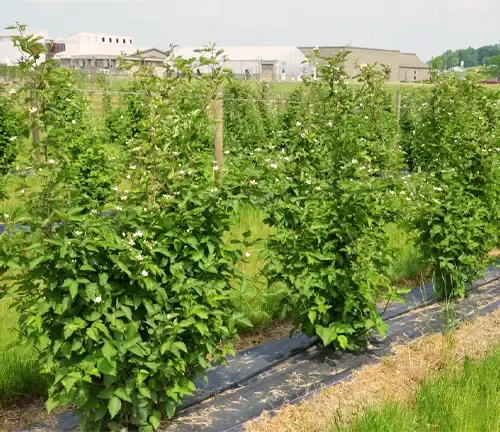
Care
This blackberry tree requires regular watering, especially during dry periods. Mulching around the base helps retain moisture and suppresses weed growth. Pruning is necessary to maintain the plant’s shape, remove dead canes, and promote healthy growth.
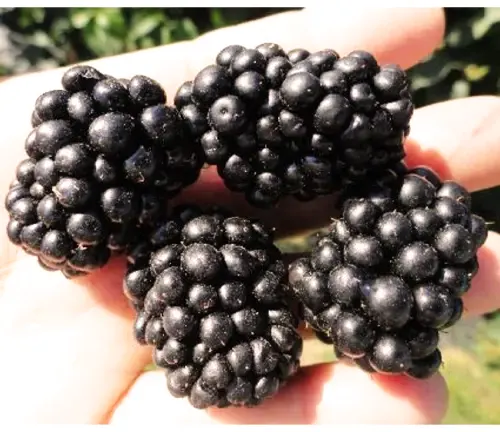
Benefits
The Arapaho Blackberry Tree offers numerous benefits. Apart from providing a delectable fruit harvest, it enhances the aesthetic appeal of gardens and landscapes. Additionally, blackberries are a rich source of antioxidants and essential vitamins.
Invasive
The Arapaho Blackberry Tree is not considered invasive. However, it can spread through underground runners, so monitoring its growth is advisable.
Lifespan
With proper care, the Arapaho Blackberry Tree can live for approximately 15 to 20 years.
Disadvantage
One potential disadvantage of the Arapaho Blackberry Tree is its susceptibility to certain pests and diseases, which can affect its overall health and fruit production.
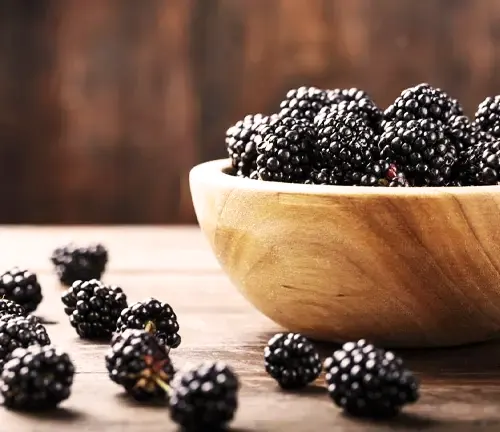
Edible or Not
Yes, the fruits of the Arapaho Blackberry Tree are edible and highly sought after for their sweet and tangy taste.
Habitat Requirements
This blackberry tree thrives in a variety of habitats, including open woodlands, hedgerows, and gardens. It requires well-drained soil and sufficient sunlight to grow and produce a bountiful harvest.
Name Origin
The name “Arapaho” originates from the Arapaho Native American tribe, who traditionally inhabited the Great Plains region of North America.
Fun Facts:
- The Arapaho Blackberry Tree is a thornless blackberry variety, making it a popular choice among gardeners.
- Blackberries, including those from the Arapaho Blackberry Tree, are technically not berries but rather aggregate fruits, composed of multiple small drupelets.
- This blackberry variety is known for its excellent disease resistance, particularly against viruses and fungal infections.
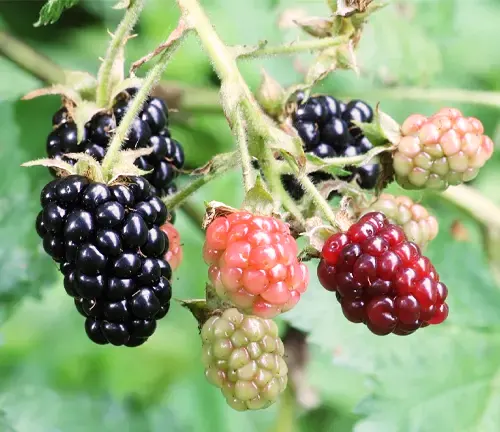
Characteristics
The Arapaho Blackberry Tree features erect, thornless canes with dark green leaves. It produces white to pale pink flowers in spring, followed by clusters of blackberries in summer.
Varieties
The Arapaho Blackberry Tree is a distinct variety itself, known for its exceptional fruit quality and disease resistance.
Pruning
Pruning is essential to maintain the shape and productivity of the Arapaho Blackberry Tree. It is recommended to prune the canes in late winter or early spring, removing any dead, damaged, or overcrowded branches.
Propagating
The Arapaho Blackberry Tree can be propagated through softwood cuttings or by division. Softwood cuttings are taken in early summer, while division involves separating the plant’s root ball into multiple sections.
Common Pests & Diseases
The Arapaho Blackberry Tree is susceptible to pests such as aphids, spider mites, and fruit worms. It can also be affected by diseases like cane blight, crown gall, and powdery mildew. Regular monitoring and appropriate pest and disease management practices are necessary to maintain the tree’s health.
Frequently Asked Questions:
- How long does it take for the Arapaho Blackberry Tree to bear fruit?
- The Arapaho Blackberry Tree typically begins to bear fruit within the second or third year after planting.
- Can the Arapaho Blackberry Tree be grown in containers?
- While it is possible to grow the Arapaho Blackberry Tree in containers, it is generally recommended to provide it ample space to spread and grow, such as in a garden or landscape setting.
- How should I store harvested blackberries?
- Blackberries are perishable and best enjoyed fresh. If storing, keep them refrigerated and consume them within a few days.
- Does the Arapaho Blackberry Tree require cross-pollination?
- No, the Arapaho Blackberry Tree is self-fertile, meaning it does not require another plant for pollination and fruit production.
In conclusion, the Arapaho Blackberry Tree is a prized addition to gardens and landscapes, providing not only delicious fruits but also aesthetic beauty. With its thornless canes and disease resistance, this blackberry tree offers ease of maintenance and a bountiful harvest year after year. Whether you’re a fan of fresh blackberries or enjoy using them in jams, pies, or smoothies, the Arapaho Blackberry Tree is sure to delight your taste buds and add charm to your outdoor space.


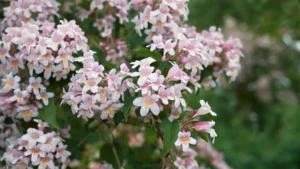
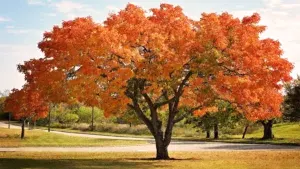

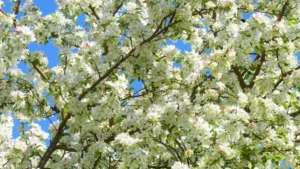
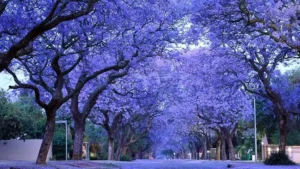
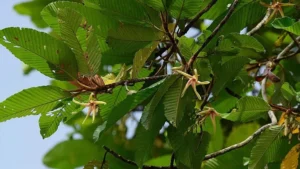
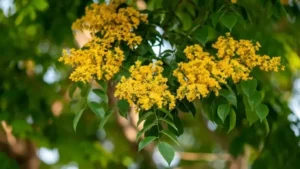
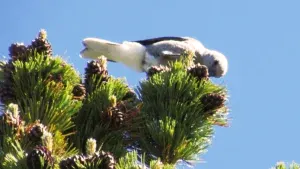
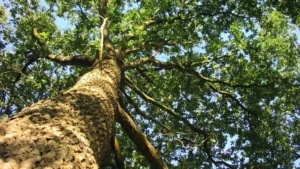
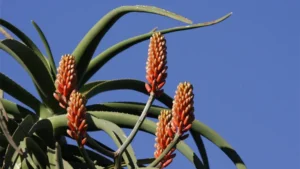
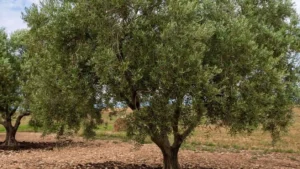
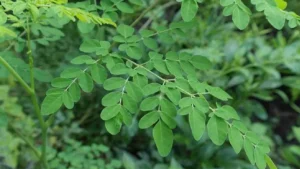
Leave your comment